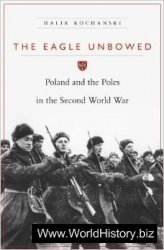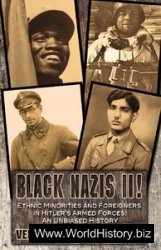Finding His Way
From a retrospective view and in light of what Russell Means would later accomplish, he appears to have been largely treading water over the next few years. In reality, he was quite busy in a variety of ways and gradually moving
Toward a pattern of working to improve life, first for other Lakotas, and later for Indians from all nations.
Means had a second child with Betty, a boy they named Scott. He attended Iowa Technical College in Ottumwa, Iowa, studying a variety of subjects but especially accounting and computer programming. Means also played basketball for Iowa Tech and even filled in as coach when the regular coach resigned. He then attended Arizona State University in Tempe on scholarship, continuing to study computer programming.
When Means learned that his father was residing in the Felix Cohen Old Age Home at Pine Ridge, he wrote inviting his father to come to Arizona and stay with him and his family. Hank Means arrived on December 1, 1966. On January 6, 1967, Hank came back to Russell’s home after having been drinking and went to bed. The next morning, when he did not get up early as he usually did, his son checked on him and found his father dead. When he called his mother, Russell learned that just the day before his Grandfather John also had died. Perhaps the most meaningful testimonial to Hank Means’s life that his son could give appears in Russell Means’s autobiography: “Of all the Means brothers, only my father had remained Indian all the way.”4
Needing to find work after Arizona State, Means participated in rodeos and then, after suffering an infection that robbed him of his hearing in his left ear, got a job on the Rosebud Reservation as director of management information systems for the Community Action Program (CAP) operated by the Office of Economic Opportunity. At the time, William Janklow was the Legal Aid attorney on the reservation, and the two men became close friends and colleagues in trying to improve life for the Rosebud residents.
The Cleveland American Indian Center
In July 1968, after leaving his position with CAP, Means, Betty, and their children moved to Cleveland. After briefly working for an employment agency, Means became an accountant for the Council for Economic Opportunity, and Betty found employment as a secretary at the Cleveland Housing Authority.
In the spring of 1969, Means took a step that would lead before long to the American Indian Movement. Along with friends whom he had met in Cleveland, especially a Montana Crow named Sarge Old Horn, he decided to begin an Indian center where Indians in the Cleveland area could meet and interact, but that also could help with problems such as employment and securing funds to return home. By April 1969, a board of directors had been elected and the organization incorporated as the Cleveland American Indian Center. An Episcopalian priest offered the basement of his church as an office and the auditorium for events.
The Center obtained a $5,000 grant from the city and enlisted Jess Sixkiller, head of the National Urban Indian Council, to help the Cleveland American Indian Center get organized. It formally opened on January 2, 1970.
Introduction to AIM
Russell Means’s introduction to the American Indian Movement, which was created in 1968 by Dennis Banks and other Indians from the Minneapolis area, was less than positive. In late 1969, Means attended a National Urban Indian Organization conference in San Francisco organized by Sixkiller and his associates. At the conference, Means noticed a group of attendees dressed in beaded belts, moccasins, headbands, and other Indian items of clothing. During that period of his life, Means was still wearing stylish Euro-American suits. Put off by their attire, he found himself on the opposite side when they attacked Sixkiller’s organization, and Means spoke passionately in defense of the National Urban Indian Council.
Two of the AIM members who were present at the San Francisco conference were Dennis Banks and Clyde Bellecourt. Given Means’s sharp response to the AIM members, he was surprised when a few weeks after the Cleveland American Indian Center opened for business he received a phone call from Dennis Banks. Banks asked Means to come to Detroit and support a confrontation with the National Council of Churches. It took no more than that one visit to Detroit to convince Means of the importance of AIM and the direction that his own life should take. On his way home from Detroit, he wrote his resignation letter from the Council for Economic Opportunity, where he had continued to work while starting the American Indian Center. Means recalls that moment as a great turning point in his life: “For the first time, I knew the purpose of my life and the path I must follow to fulfill it. At the age of thirty I became a full-time Indian.”5
Means established in Cleveland the first AIM chapter outside Minneapolis: Cleveland AIM, or Claim. Through the dual organizations—Claim and the Center—Means helped develop a long list of programs to help Indians in the area. For example, Indians were provided with the means to get food stamps, travel home for family burials, receive job training, participate in cultural and educational programs, and seek employment and housing. Also established were a medical clinic and a Legal Aid service.
The Cleveland organizations actively opposed the Cleveland Indians baseball team mascot, a caricature named Chief Wahoo; persuaded the Cleveland schools to revise their curriculum; and demonstrated against the film A Man Called Horse for its distortion of Indian history and culture. Means also traveled to other areas for AIM events, including a confrontation with the National Congress of American Indians in Kansas City, Missouri, in May 1970. AIM viewed the much older organization, founded in 1944, as largely a sell-out to U. S. government interests. Also in 1970, Means participated in a demonstration atop Mount Rushmore designed to restate Lakota claims to the Black Hills.
All of these activities took their toll on Means’s marriage. In the fall of 1970, Betty, with the children, returned to the Hopi Reservation in Arizona.




 World History
World History









